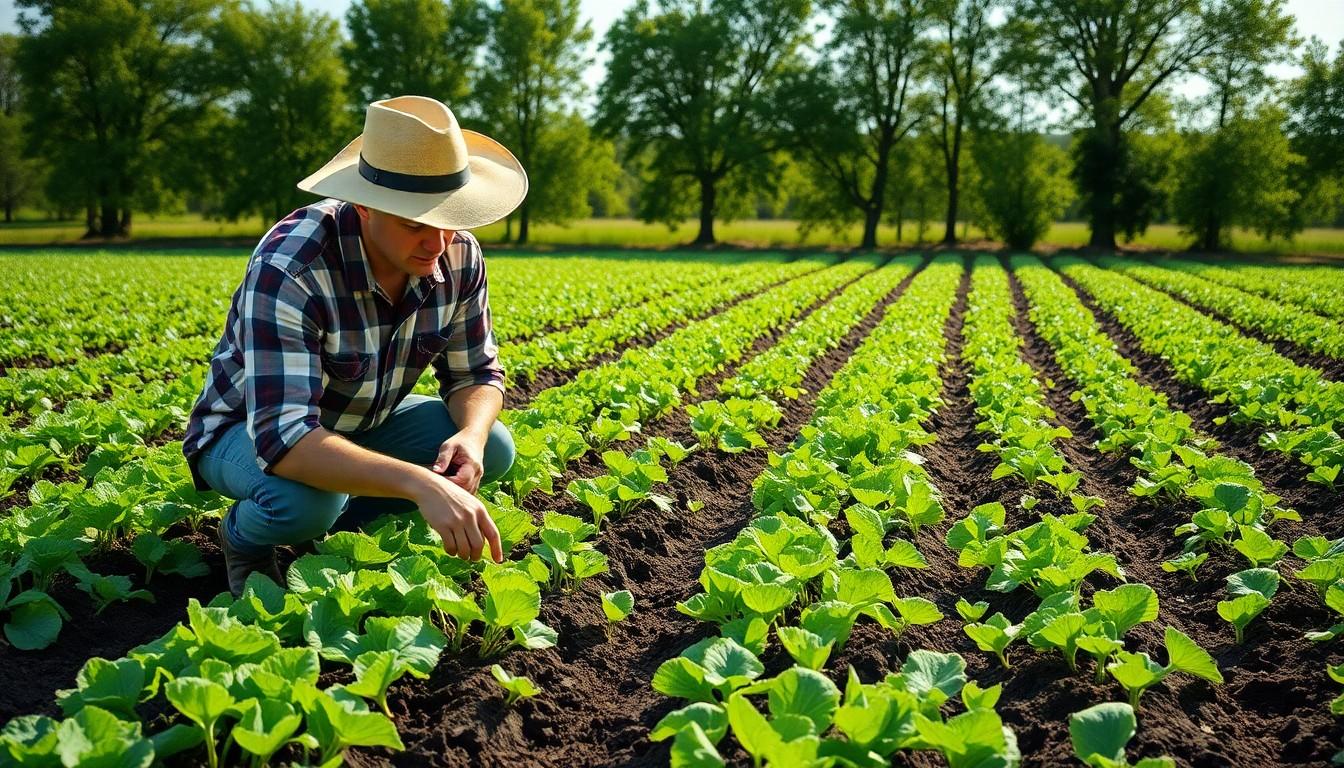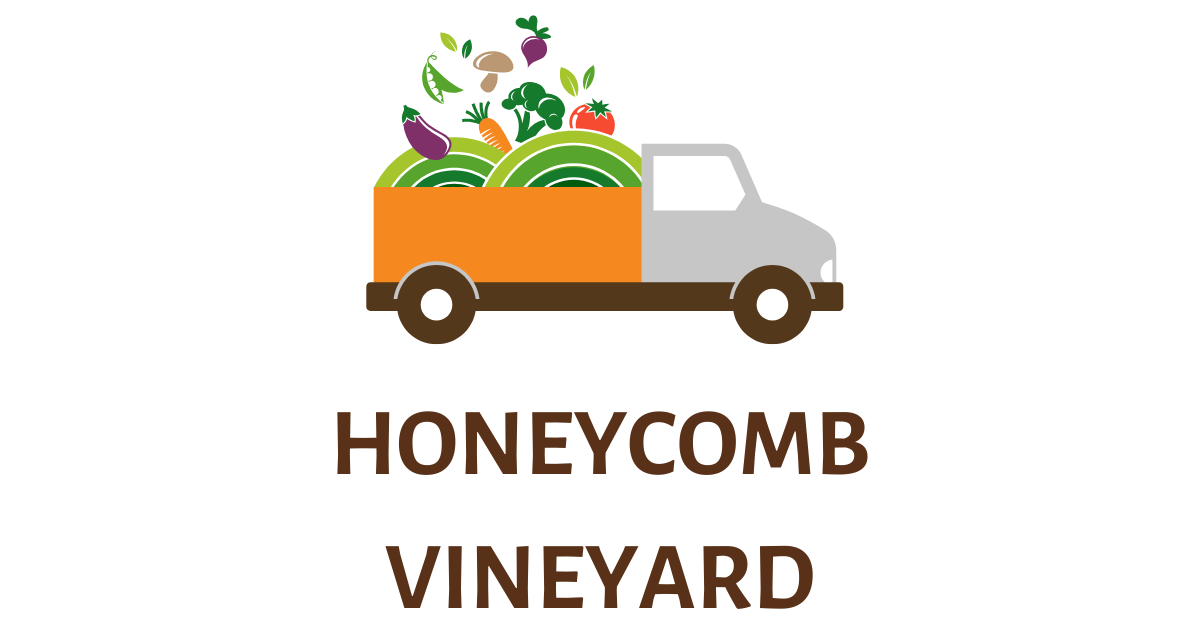The Best Fluffy Pancakes recipe you will fall in love with. Full of tips and tricks to help you make the best pancakes.

Regenerative Agriculture Examples: Transform Your Farming for a Sustainable Future
Regenerative agriculture isn’t just a buzzword; it’s a superhero cape for our planet. With farming practices that restore soil health, boost biodiversity, and trap carbon, it’s like giving Mother Nature a much-needed spa day. Imagine crops thriving while the earth gets a refreshing makeover—talk about a win-win!
Overview Of Regenerative Agriculture
Regenerative agriculture comprises a series of practices intended to restore soil health while increasing biodiversity. This farming approach shifts focus from conventional tillage methods towards techniques that enhance natural ecosystems. Key practices include cover cropping, crop rotation, and agroforestry.
Cover cropping involves planting specific crops to protect and enrich the soil during off-seasons. This practice minimizes erosion, increases organic matter, and retains moisture. Meanwhile, crop rotation disrupts pest and disease cycles, promoting healthier crops and improved yields.
Agroforestry combines agricultural and forestry practices, creating diverse ecosystems. Integrating trees into farms offers numerous benefits, like improved soil structure and enhanced habitat for wildlife. These practices foster resilience against climate change while facilitating carbon sequestration.
Another crucial aspect of regenerative agriculture involves holistic livestock management. This approach emphasizes rotational grazing, supporting soil restoration and enhancing pasture health. Livestock contributes to nutrient cycling through manure, reinvigorating the soil for subsequent crop growth.
Farmers implementing these methods frequently observe increased farmer resilience against climate impact. Profits typically improve through healthier ecosystems that support sustainable farming practices. As regenerative agriculture gains traction, it demonstrates significant potential for transforming global agricultural systems and improving food security.
Collectively, these practices encourage a systemic change aimed at restoring ecological balance, offering a promising model for future food production.
Key Principles Of Regenerative Agriculture

Regenerative agriculture revolves around several core principles that deliver ecological and economic benefits.
Soil Health Improvement
Soil health improvement stands at the forefront of regenerative practices. Techniques like cover cropping reduce erosion and enhance soil structure. Organic matter builds up through these crops, leading to richer, more fertile soil. Nutrients cycle more effectively, promoting plant growth. Farmers frequently observe increased moisture retention, benefiting crops during dry periods. As soil health improves, carbon sequestration occurs, aiding in climate change mitigation.
Biodiversity Enhancement
Biodiversity enhancement plays a crucial role in regenerative agriculture. Crop rotation creates diverse plant communities, which attract various beneficial insects and pollinators. Introducing agroforestry systems contributes additional layers of habitat for wildlife. These practices mitigate pest proliferation through natural predators, reducing the need for chemical interventions. Increased plant variety also leads to resilient ecosystems, capable of surviving environmental changes. Farmers often experience healthier crops as diverse systems bolster overall agricultural productivity.
Regenerative Agriculture Examples
Numerous methods illustrate the effectiveness of regenerative agriculture. Each unique practice contributes to improved soil health and biodiversity.
Example 1: Agroforestry Systems
Agroforestry systems integrate trees with crops or livestock, enhancing both production and ecological balance. This method supports nutrient cycling, improves soil structure, and enhances biodiversity. In North America, organizations such as The Savanna Institute demonstrate successful agroforestry practices by planting tree crops alongside conventional farming. Studies reveal that these systems can sequester considerable carbon, effectively combating climate change. Diverse habitats thrive in these environments, attracting beneficial insects that support pest management.
Example 2: Cover Cropping
Cover cropping protects and enriches soil during fallow periods. Farmers use species like clover or vetch to enhance soil structure and reduce erosion. In many regions, practitioners observe increased moisture retention due to improved soil health. The practice also disrupts pest and disease cycles, leading to healthier crops without chemical interventions. Additionally, the use of cover crops can substantially increase organic matter levels, enriching the soil over time. Organizations such as the NRCS advocate for cover cropping, emphasizing its role in sustaining agricultural productivity.
Example 3: Rotational Grazing
Rotational grazing optimizes pasture use while promoting soil rejuvenation. Livestock is moved between specific grazing areas, allowing vegetation time to recover. This strategy enhances soil organic matter and promotes nutrient cycling. Research indicates that rotational grazing can significantly increase pasture productivity and improve forage quality. Many farmers adopting this practice see reduced feed costs and improved animal health. Notably, the implementation of rotational grazing also helps mitigate overgrazing impacts, ensuring long-term sustainability in livestock production.
Benefits Of Regenerative Agriculture
Regenerative agriculture offers numerous advantages that extend beyond traditional farming practices. These benefits primarily impact environmental sustainability and economic profitability.
Environmental Impact
Regenerative agriculture significantly improves soil health, enhances biodiversity, and promotes carbon sequestration. Practices like cover cropping and crop rotation prevent soil erosion, while agroforestry creates habitats conducive to wildlife. Improved soil structure leads to better moisture retention, reducing the need for irrigation. Enhanced biodiversity helps attract beneficial insects, which mitigate pest issues naturally. Carbon dioxide levels decrease as healthy soils sequester carbon effectively, playing a crucial role in combating climate change. Increased resilience against extreme weather conditions becomes evident as ecosystems transform under these practices.
Economic Advantages
Economic benefits often materialize for farmers adopting regenerative agriculture. Higher crop yields result from healthier soils and stronger ecosystems. Reduced input costs emerge from decreased reliance on chemical fertilizers and pesticides, allowing farmers to allocate funds elsewhere. Improved animal health and productivity come from rotational grazing techniques, positively impacting livestock profitability. Farmers experience greater resilience against market fluctuations as diversified practices yield multiple income streams. Investing in regenerative practices can lead to long-term financial stability, enhancing overall farm viability.
Challenges And Considerations
Implementing regenerative agriculture practices presents several challenges. High initial costs often deter farmers from adopting these methods. Resources for cover crops or new equipment initially strain budgets. Additionally, a steep learning curve exists; transitioning from conventional methods requires time and expertise.
Adapting to local climate conditions can pose difficulties as well. Crop selection must consider frost dates, rainfall patterns, and soil types to ensure success. Geographic variability can complicate implementation strategies, making tailored approaches essential.
Furthermore, market access for regenerative products remains limited. Consumers often lack awareness of the benefits, which can reduce demand. Establishing clear supply chains helps support these practices, as sustainable markets grow.
Regulatory hurdles further complicate the landscape. Different regions have varying agricultural policies that can hinder the adoption of innovative practices. Farmers must navigate local and federal regulations to implement regenerative practices effectively.
Collaboration among farmers, researchers, and policymakers enhances knowledge sharing. Creating a community focused on regenerative agriculture fosters collaboration, leading to innovative solutions and resources. Education plays a crucial role in addressing misconceptions about these practices and their benefits.
Monitoring long-term outcomes poses another consideration. While regenerative agriculture shows promise, measuring results requires sustained commitment to data collection. Tracking soil health improvements or biodiversity changes requires ongoing assessment.
Farmers weighing these challenges find support through networks and educational resources. Engaging with organizations dedicated to regenerative practices provides valuable insights. Overcoming these challenges positions farmers to reap the benefits of regenerative agriculture, ultimately promoting healthier ecosystems and sustainable farming.
Beacon of Hope
Regenerative agriculture stands as a beacon of hope for sustainable farming. By adopting practices that prioritize soil health and biodiversity, farmers can enhance not only their productivity but also the planet’s ecological balance. The integration of techniques like cover cropping, crop rotation, and agroforestry showcases the potential for a more resilient agricultural system.
While challenges exist in transitioning to these methods, the long-term benefits far outweigh the initial hurdles. As more farmers embrace regenerative practices, the collective impact will contribute to healthier ecosystems and a more sustainable future for food production. The journey toward regenerative agriculture is not just a trend; it’s a vital movement for the environment and the economy alike.
